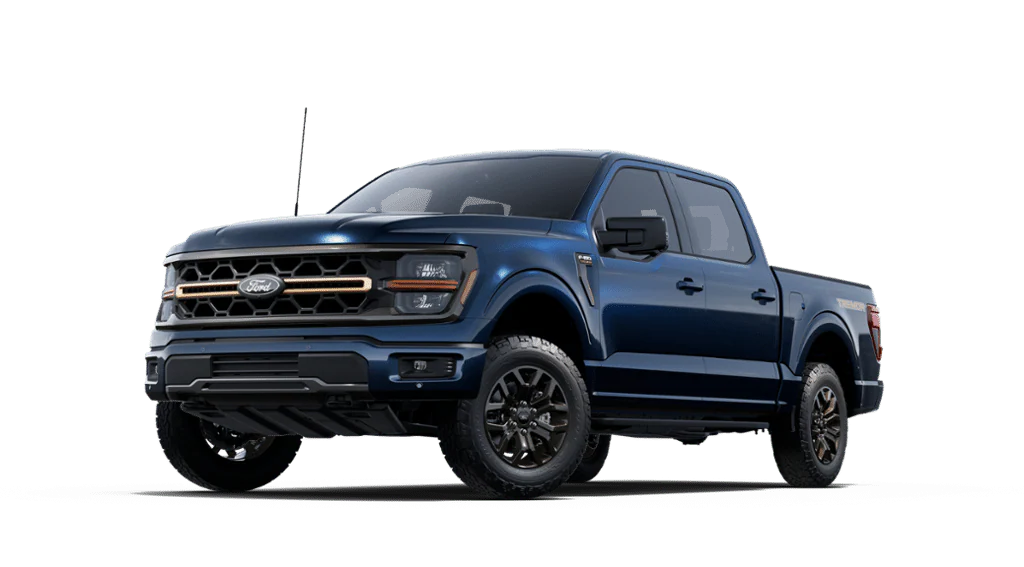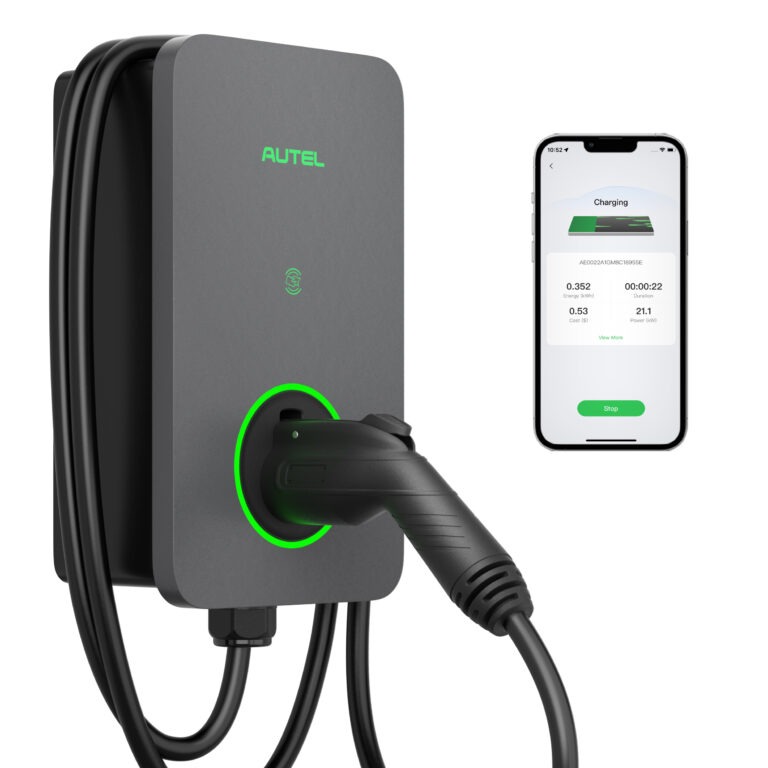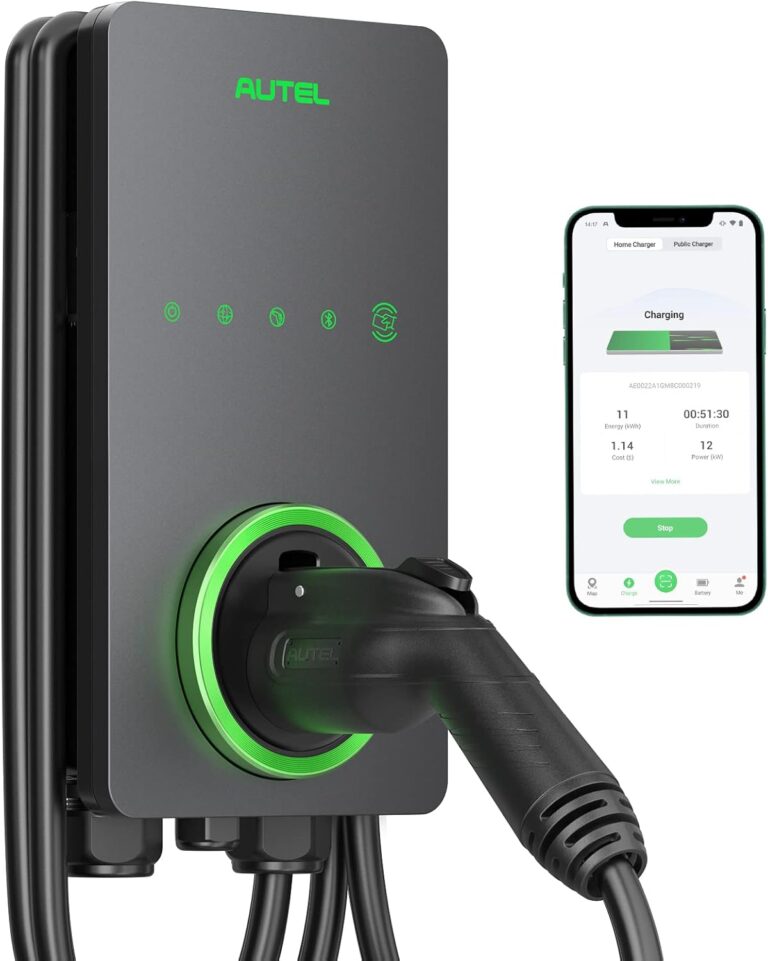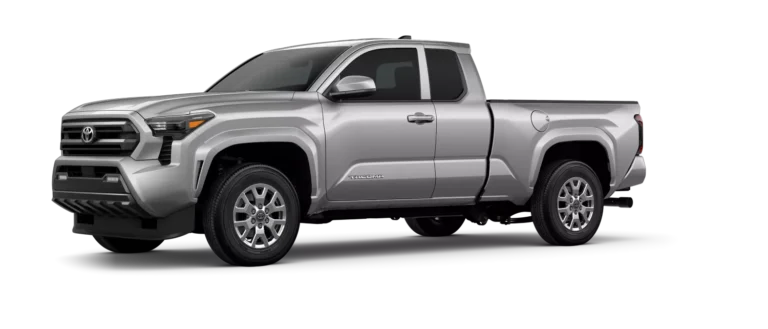
Ford F150 VIN Decoder (2025)
Don’t risk hidden issues! Click ‘Check Any VIN Now’ to see damage, recalls, mileage issues, title checks and more!
What Is A Ford F150 VIN Decoder?
For decades, the Ford F150 has dominated the American truck market. Its robust design, impressive capabilities, and wide range of trims have made it a popular choice for everything from daily commuting to heavy duty work. However, this variety also means that finding accurate information about a specific F150 can be tricky. From engine options to cab configurations, knowing the details of your truck is essential…
That‘s where the Vehicle Identification Number (VIN) steps in. Decoding your F150′s VIN is more than just identifying its origin; it‘s a key to unlocking a wealth of information about your truck’s history and specifications. By decoding the VIN, you can verify the factory installed options, such as the engine type (including popular EcoBoost variants), cab configuration (Regular, SuperCab, SuperCrew), and bed length. This is essential for potential buyers seeking to confirm that the vehicle matches its description.
It‘s also incredibly helpful for existing owners needing to order the correct replacement parts or identify potential issues during maintenance. Whether you’re buying, selling, or simply maintaining your F150, understanding its VIN is a valuable tool.
Ford Table of Contents
How To Find The VIN On A Ford F150
Driver’s side dashboard (visible through the windshield)
Driver’s side door jamb sticker (B-pillar)
Vehicle registration documents
Insurance card/policy
Engine bay (less common, but worth mentioning)
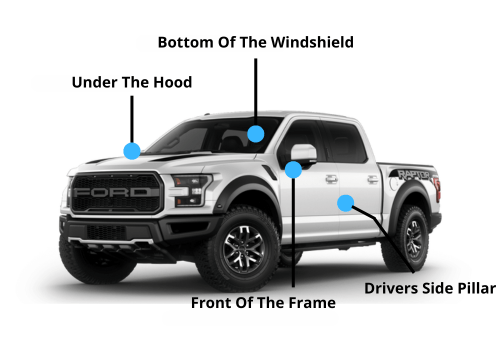
What Are The Best Accessories For The Ford F150
Best F150 Tonneau Cover
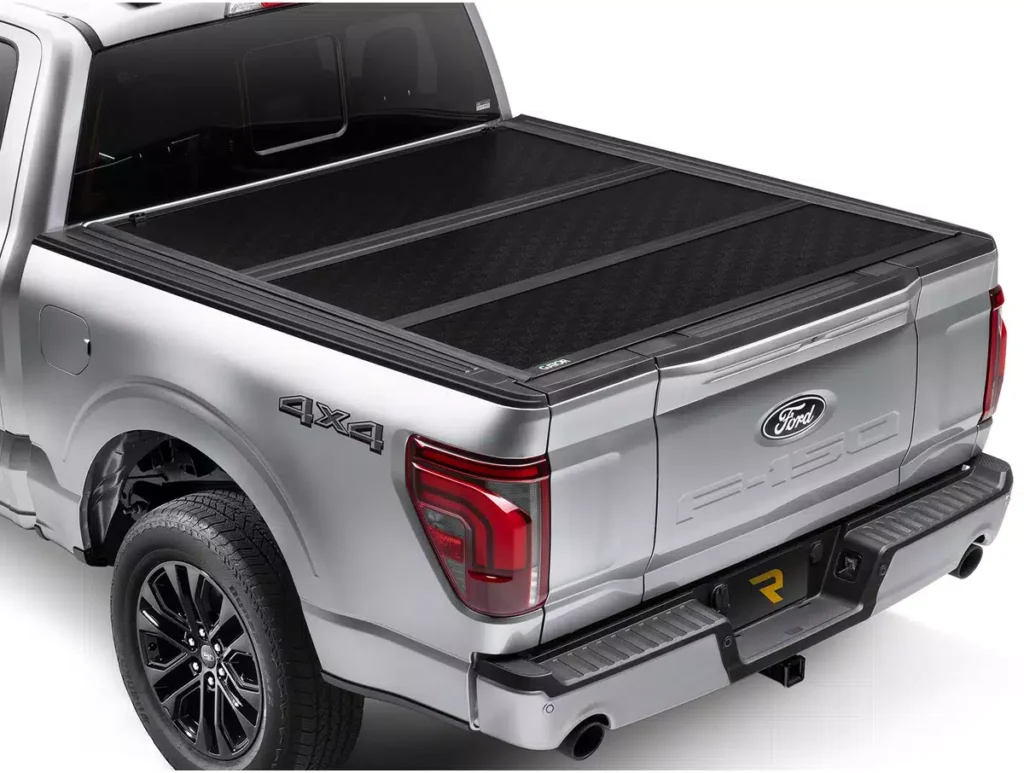
Gator EFX Hard Folding Tonneau
- Material: Heavy duty aluminum panels in matte black
- Compatibility: F150 models. Available for 5’7", 6’5", and 8' beds
- Weight Capacity: Supports up to 300 lbs
- Security: Panels lock automatically
The Gator EFX is made with solid aluminum panels that feel sturdy right out of the box. They’re coated in a matte black powder finish that not only looks sharp on your F-150, but also resists scratches, UV rays, and rust. It’s the kind of material that gives you peace of mind whether you’re dealing with harsh sun, rain, or a pile of gear in the bed.
This cover is designed specifically for your truck’s bed size. Whether you’ve got a 5’7″, 6’5″, or 8′ bed. Once it’s clamped down, it fits flush with the bed rails, giving your F-150 a clean, low-profile look. No awkward overhangs or bulky edges; just a tight, factory style fit that blends right in.
The tri fold design makes it easy to use. You can flip it open one section at a time or fold it all the way up when you need full bed access. There’s also an integrated drainage system with corner tubes and rubber seals all around the edges, so water stays out, even in heavy rain. It’s practical and sleek, with a no nonsense style that works for both work trucks and daily drivers.
This thing is tough. It holds up to 300 pounds of evenly distributed weight on top, so it’s not just keeping rain out. It can handle snow, gear, or even the occasional curious kid climbing on it. When closed and locked with your tailgate, it gives you solid, secure storage that keeps your tools or cargo out of sight and out of trouble.
The matte black coating wipes down easily, even after dusty job sites or messy weather. A damp cloth or quick rinse with the hose is usually all it takes. No special cleaners or coatings needed, just a quick clean up and it’s back to looking sharp.
The Gator EFX is built to last through years of weather, road trips, and workdays. The panels don’t warp, fade, or crack over time, and the hinges and seals hold strong. It feels solid when it’s on, and a lot of owners say it holds up just as well after a few years as it did the day they installed it.
You won’t need a drill or a toolbox full of gear to get this installed. It clamps on using a simple, secure system, and you can have it fully mounted in under 30 minutes. Everything you need comes in the box, and if you’ve got a helping hand, it goes even faster.
Best F150 Drop In Bed Liner
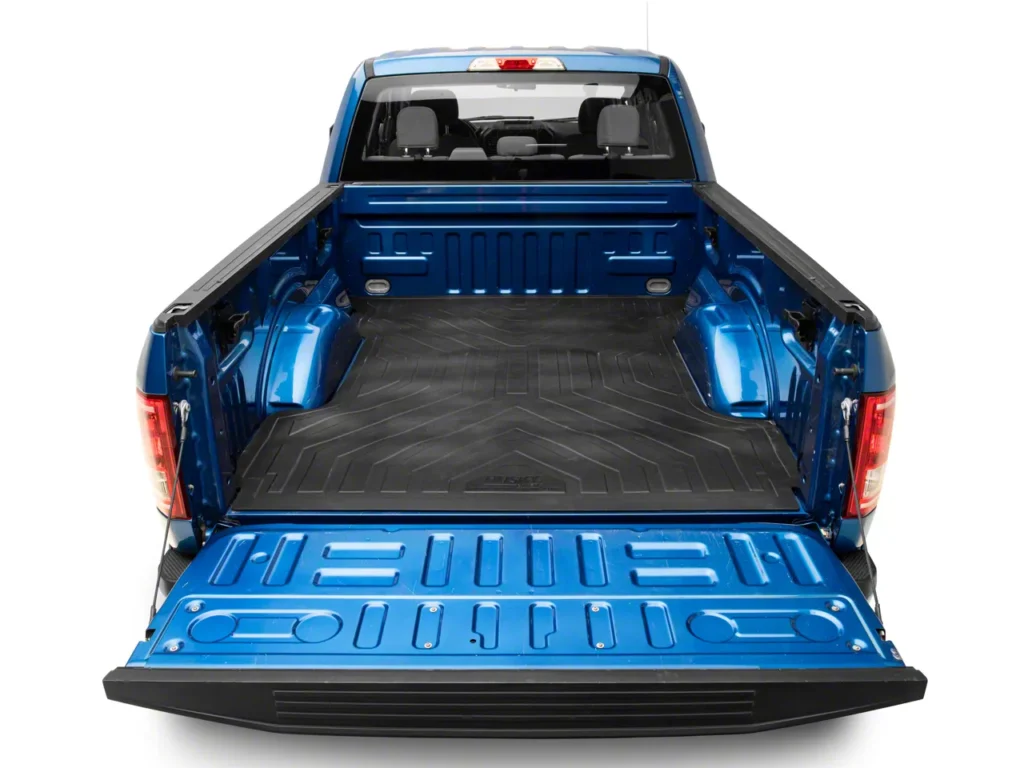
Husky Custom Bed Liner
- Material: Rubberized DuraGrip for Durability and Cushioning
- Compatibility: Custom fit for most Ford F150 models
- Design: Raised ridges and anti-skid surface
- Warranty: Lifetime warranty
The Husky bed liner is made from high impact TPO (Thermoplastic Olefin). If you’re hauling lumber, tools, or even just groceries in your F-150, then this material is going to protect it from a beating. This isn’t some flimsy, easily scratched plastic. This is a material engineered to shrug off abuse.
Forget those flimsy, universal fit liners that shift and slide like they’re auditioning for a dance off. This thing is laser measured for a precise, snug fit in your F-150 bed, following every contour and curve. No gaps, no guesswork – just a perfect, secure fit.
The design isn’t just about looks (though it does look good!). It incorporates strategically placed channels and ridges. Why? To help keep your cargo from sliding around like a hockey puck on ice, while also directing water and debris away from your precious gear.
This liner provides serious protection. We’re talking defense against scratches, dents, spills, and anything else the job throws your way. Forget worrying about gouges from that load of gravel or stains from that leaky paint can. This liner’s got your back (or, well, your bed).
When it’s time to clean up, don’t break a sweat. Just hose it down. Seriously, that’s it. The TPO material resists stains and chemicals, making cleanup a breeze. No scrubbing, no special solutions, just a quick rinse and you’re back in business.
This isn’t some flimsy, disposable liner destined for the landfill after a few months. It’s engineered for long lasting durability, able to withstand extreme temperatures and heavy use. Sun, snow, rain or cargo. This thing is built to handle it all, year after year.
Installation is a breeze. Typically, it’s a simple drop in application or utilizes existing tie down points. No drilling, no special tools, no wrestling match required. You’ll be protected and ready to haul in minutes.
Best F150 Floor Mats
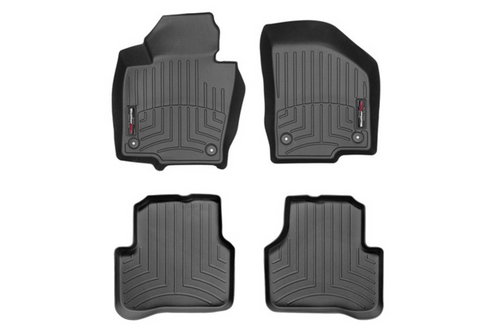
WeatherTech Floor Mats
- Material: High Density Tri Extruded (HDTE)
- Compatibility: Custom fit for most Ford F150 models
- Design: Traps water, mud, salt, and debris
- Color Options: Black, Tan, and Grey
If you drive a Ford F-150, you know your truck sees a little bit of everything. From mud, gravel, coffee spills, you name it. That’s where the WeatherTech FloorLiner really shines. It’s made from a high density tri extruded (HDTE) material that’s rigid enough to hold its shape, even after years of abuse. Unlike soft rubber mats that can slide around or curl at the edges, these stay locked in place, especially important when you’re hopping in with muddy boots or work gear.
They’re built specifically for the F-150’s contours, so they don’t just “kind of fit”, they snap into place like they were factory installed. I’ve seen them take on everything from Texas summer heat to icy northern winters without cracking, fading, or staining. If you’re hard on your truck, these liners will keep your interior looking sharp without needing constant cleanup.
This is one of the things WeatherTech really gets right for the Ford F-150; the fit. They use laser scanning tech to map out every curve, contour, and edge of the F-150’s floor, so when you drop these liners in, they don’t just fit, they lock in like they belong there. No sliding, no weird gaps, no trimming needed.
That said, you’ve got to be spot on when ordering. Make sure you pick the exact year and cab type: SuperCrew, SuperCab, Regular – because these liners are made to fit only your specific setup. And because the fit is so dialed-in, don’t expect to toss them into another vehicle easily. They’re not universal – they’re F-150 only, and that’s exactly why they work so well.
If you’ve ever tracked mud or snow into your F-150, you know how fast that mess can spread. WeatherTech’s FloorLiner handles it like a pro. The deep channels and raised edges are built to trap everything; mud, slush, spilled coffee – so it doesn’t run off onto your carpet. There’s even a built in “reservoir” system that holds larger messes until you’re ready to clean it up, which is a lifesaver during wet seasons or job site chaos.
The surface texture gives you enough grip so your boots don’t slide around, but not so rough that it feels uncomfortable or hard to clean. It’s that balance of smart design and rugged function that makes these liners a favorite among F-150 owners who actually use their trucks.
These FloorLiner provides exceptional protection against virtually anything you can throw at it (or spill on it). The extended coverage and raised edges are particularly effective at preventing liquids from seeping into the carpet.
Cleaning these mats is about as easy as it gets. Just pull them out of your F-150, spray them down with a hose, and let them dry. The material doesn’t soak up stains, so most messes come right off without any scrubbing. Whether it’s dirt from a trail or a spilled drink, they clean up fast and look like new every time.
Durability is one of the big reasons F-150 owners stick with WeatherTech. These FloorLiners are built to take a beating; whether it’s daily driving, job site abuse, or extreme weather. They don’t crack in the cold, fade in the sun, or warp over time. Plenty of folks have had theirs for five years or more and they’re still going strong. They might not last forever, but they sure hold up like they were made to.
Installing WeatherTech FloorLiners in your F-150 is simple and hassle free. Just lay them down in the exact spot they’re designed for. They line up perfectly with the floor’s contours because they’re custom made for your truck’s year and cab style, there’s no trimming or adjusting needed. You can have them installed and ready to go in minutes, with no tools required.
How To Understanding The Ford F150 VIN Structure
Understanding your Ford F 150 VIN structure is key for using a Ford F150 VIN decoder. The Ford F150 VIN, or Vehicle Identification Number, is a 17-character code that holds valuable information about its origin, specifications, and history. Decoding it is essential to unlocking information. Each character, or group of characters, within the VIN provides specific details about your truck’s unique attributes.
To provide the most accurate Ford F150 VIN decoder information, we’ll break down the VIN structure by specific year ranges due to changes in Ford’s VIN coding practices over the years. Please locate your F150’s model year and refer to the corresponding section below to use our Ford F150 VIN decoder information most effectively.
How To Decode A Ford F150 VIN By Year
1980-1996 Ford F150 VIN Decoder
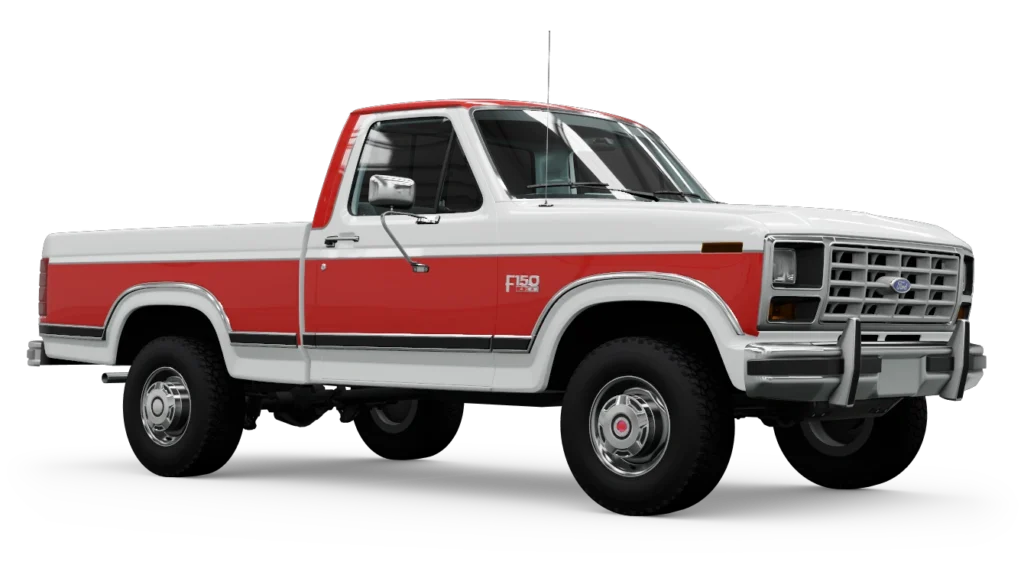
For F150s manufactured between 1980 and 1996, the VIN structure generally follows this format. Understanding this structure is crucial to using a Ford F150 VIN decoder correctly for these years.
1st Character: Country of Origin
Indicates where the vehicle was manufactured:
1 – USA
2 – Canada
2nd Character: Manufacturer
Identifies the manufacturer:
F – Ford
3rd Character: Vehicle Type/Division
Designates the vehicle type or division responsible for its production:
T – Truck
4th-8th Characters: Vehicle Attributes
These characters help identify the truck’s body type, engine, and drivetrain.
Cab Type:
Identifies the cab configuration:
Regular Cab – Commonly represented with “2”
SuperCab/Extended Cab – Commonly represented with “4”
Bed Length:
Indicates the bed size:
Short Bed (6.5 ft) – Typically denoted with “S”
Long Bed (8 ft) – Typically denoted with “L”
Engine Codes (8th Character)
The 8th character in the VIN represents the engine type, which is crucial for parts compatibility and performance identification.
1980-1986 Ford F150 Engine Codes:
A – 3.8L V6
C – 8.2L V8 Diesel (Heavy Duty Applications)
E – 4.9L I6 (300 CID)
F – 5.0L V8 (302 CID)
G – 5.8L V8 (351M CID)
H – 5.8L V8 (351W CID)
K – 6.6L V8 (400 CID)
L – 7.5L V8 (460 CID)
1987-1991 Ford F150 Engine Codes:
Y – 4.9L I6 (300 CID)
F – 5.0L V8 (302 CID) EFI
H – 5.8L V8 (351W CID)
M – 5.8L V8 (351M CID)
K – 7.5L V8 (460 CID)
1992-1996 Ford F150 Engine Codes:
Y – 4.9L I6 (300 CID)
N – 3.8L V6 (rare)
T – 5.0L V8 (302 CID)
H – 5.8L V8 (351W CID)
G – 7.5L V8 (460 CID)
P – 7.3L V8 Diesel (IDIT – Turbocharged Diesel)
Additional Notes on Engine Codes:
Some codes may require verification for specific years:
B – 4.9L I6 (300 CID)
H – 5.0L V8 (302 CID) EFI
N – 5.8L V8 (351W CID)
G – 7.5L V8 (460 CID)
GVWR (Gross Vehicle Weight Rating)
Indicates the maximum permissible weight of the vehicle, including cargo and passengers. The specific GVWR codes vary based on cab and engine configurations.
Drive Type (Drivetrain Code)
The drivetrain is encoded within the VIN to indicate 2WD or 4WD:
“2” – 2WD (Two-Wheel Drive)
“4” – 4WD (Four-Wheel Drive)
9th Character: Check Digit
A security feature used to validate the VIN and detect errors.
10th Character: Model Year
Indicates the model year of the truck:
Year | VIN Code |
|---|---|
1980 | A |
1981 | B |
1982 | C |
1983 | D |
1984 | E |
1985 | F |
1986 | G |
1987 | H |
1988 | J |
1989 | K |
1990 | L |
1991 | M |
1992 | N |
1993 | P |
1994 | R |
1995 | S |
1996 | T |
11th Character: Assembly Plant
Identifies where the vehicle was built. Some common assembly plants include:
F – Dearborn, MI
K – Kansas City, MO
E – Louisville, KY
J – Norfolk, VA
12th-17th Characters: Production Sequence Number
A unique identifier is assigned to each vehicle as it comes off the production line.
1997-2003 Ford F150 VIN Decoder (10th Generation)
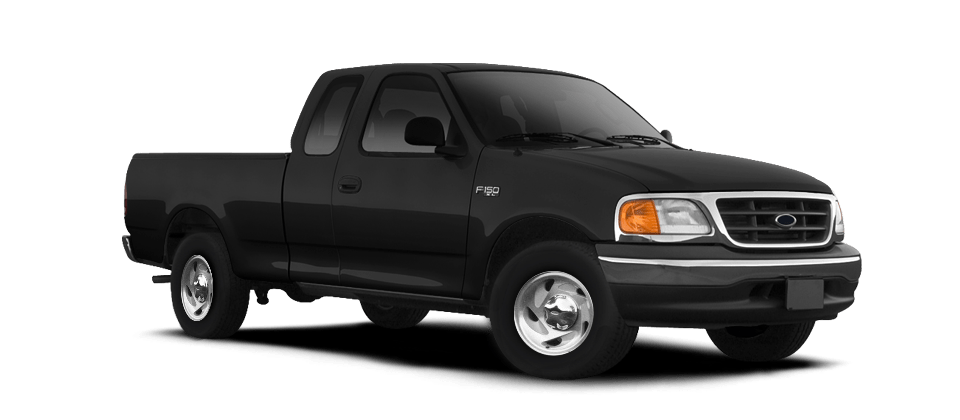
The 10th generation F150 (1997-2003) saw some revisions to the VIN structure. The VIN structure for this generation is as follows:
1st Character: Country of Origin
Indicates where the vehicle was manufactured:
1 – USA
2 – Canada
2nd Character: Manufacturer
Identifies the manufacturer:
F – Ford
3rd Character: Vehicle Type/Division
Designates the vehicle type or division responsible for its production:
T – Truck
4th-8th Characters: Vehicle Attributes
These characters help identify the truck’s body type, engine, drivetrain, and other key features.
Cab Type:
Indicates the cab configuration:
Regular Cab – Commonly represented with “2”
SuperCab (Extended Cab) – Commonly represented with “4”
SuperCrew (Crew Cab) – Introduced in 2001, often represented with “6”
Bed Length:
Identifies the bed size:
Short Bed (6.5 ft) – Typically denoted with “S”
Standard Bed (varies by year, if present) – Often included in VIN data
Long Bed (8 ft) – Typically denoted with “L”
Engine Codes (8th Character)
The 8th character in the VIN represents the engine type, crucial for identifying the correct components and configurations.
1997-2003 Ford F150 Engine Codes:
2 – 4.2L V6 (Essex)
W – 4.6L Triton V8 (SOHC)
L – 5.4L Triton V8 (SOHC)
Z – 5.4L Triton V8 (Supercharged, SVT Lightning) (1999-2003 Lightning models only)
Additional Notes on Engine Codes:
The 4.2L V6 (Essex) was available from 1997 to 2003.
The 4.6L Triton V8 was used throughout the entire generation.
The 5.4L Triton V8 had a naturally aspirated version (L) and a supercharged variant (Z) for the SVT Lightning.
GVWR (Gross Vehicle Weight Rating)
The VIN includes codes indicating the Gross Vehicle Weight Rating, which varies based on the truck’s cab, drivetrain, and engine configuration.
The F150 GVWR typically ranged from 6,050 lbs to 8,500 lbs during this generation.
Drive Type (Drivetrain Code)
The drivetrain is encoded within the VIN to indicate 2WD or 4WD:
“2” – 2WD (Two-Wheel Drive)
“4” – 4WD (Four-Wheel Drive)
9th Character: Check Digit
A security feature used to validate the VIN and detect errors.
10th Character: Model Year
Indicates the model year of the truck:
Year | VIN Code |
|---|---|
1997 | V |
1998 | W |
1999 | X |
2000 | Y |
2001 | 1 |
2002 | 2 |
2003 | 3 |
11th Character: Assembly Plant
Identifies where the vehicle was built. Some common assembly plants include:
F – Dearborn, MI
K – Kansas City, MO
E – Louisville, KY
J – Norfolk, VA
12th-17th Characters: Production Sequence Number
A unique identifier is assigned to each vehicle as it comes off the production line.
2004-2008 Ford F150 VIN Decoder
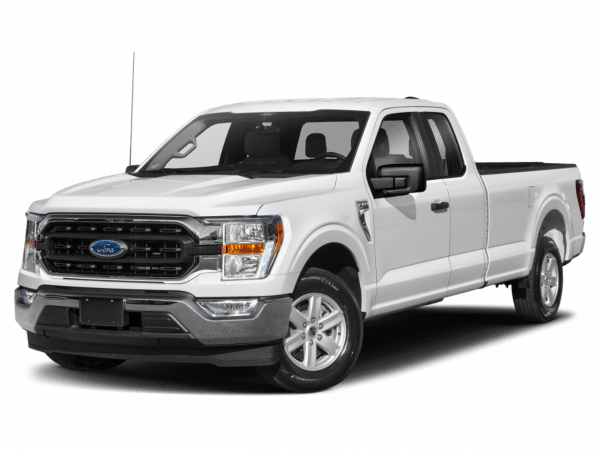
The 2004-2008 Ford F150 underwent significant changes, particularly in its frame, engine options, and bed configurations. Using a Ford F150 VIN decoder, you can accurately determine the truck’s specifications.
1st Character: Country of Origin
Identifies the country where the truck was manufactured:
1 – USA
2 – Canada
2nd Character: Manufacturer
Specifies the manufacturer:
F – Ford
3rd Character: Vehicle Type/Division
Identifies the type of vehicle:
T – Truck
4th-8th Characters: Vehicle Attributes
This section determines the body type, drivetrain, engine, and other key attributes.
Cab Type Codes (4th Character)
The 2004-2008 F-150 was available in three cab configurations:
Regular Cab – Usually coded as “1” or “2”
SuperCab (Extended Cab) – Typically coded as “4”
SuperCrew (Crew Cab) – Typically coded as “6”
Bed Length Codes
The 2004-2008 F-150 introduced changes to bed length configurations. Common codes include:
5.5 ft (Short Bed) – Often represented by “S”
6.5 ft (Standard Bed) – Often represented by “X”
8 ft (Long Bed) – Often represented by “L”
Engine Codes (8th Character)
The 8th character in the VIN represents the engine type. The 2004-2008 F-150 had the following engine options:
2004-2008 Ford F-150 Engine Codes:
2 – 4.2L Essex V6 (Used until 2008, phased out after that)
W – 4.6L Triton V8 (SOHC)
5 – 5.4L Triton V8 (3V)
Engine Notes:
The 4.2L V6 (Essex) was available in base models but was discontinued after 2008.
The 4.6L Triton V8 remained available throughout the generation.
The 5.4L Triton V8 transitioned to a 3-valve (3V) configuration, replacing the older 2-valve (2V) version.
9th Character: Check Digit
A security feature used to validate the VIN.
10th Character: Model Year
Identifies the model year of the truck:
Year | VIN Code |
|---|---|
2004 | 4 |
2005 | 5 |
2006 | 6 |
2007 | 7 |
2008 | 8 |
11th Character: Assembly Plant
Specifies the plant where the truck was built. Common codes include:
F – Dearborn, MI
K – Kansas City, MO
E – Louisville, KY
J – Norfolk, VA
12th-17th Characters: Production Sequence Number
A unique identifier is assigned to each truck as it comes off the production line.
2009-2014 Ford F150 VIN Decoder
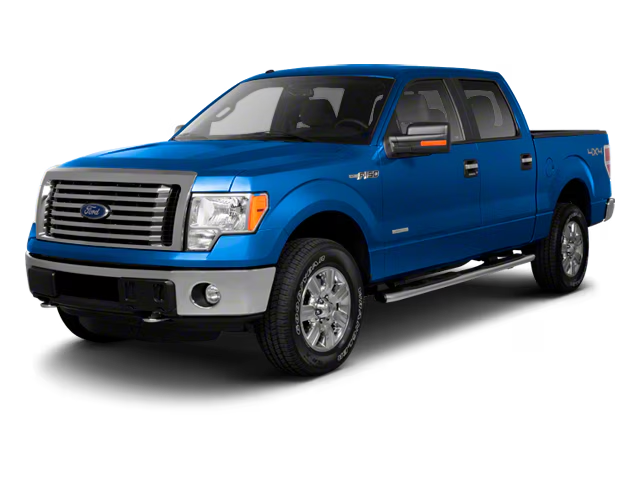
Here’s a VIN decoding guide for 2009-2014 Ford F150 models, detailing cab types, bed lengths, engine codes, and other key identifiers.
1st Character: Country of Origin
Identifies where the truck was built:
1 – USA
2 – Canada
2nd Character: Manufacturer
Indicates the manufacturer:
F – Ford
3rd Character: Vehicle Type/Division
Defines the vehicle type:
T – Truck
4th-8th Characters: Vehicle Attributes
This section covers cab type, bed length, drivetrain, and engine options.
Cab Type Codes (4th Character)
The 2009-2014 F150 was available in three cab styles:
Regular Cab – Usually coded as “1” or “2”
SuperCab (Extended Cab) – Typically coded as “4”
- SuperCrew (Crew Cab) – Typically coded as “6”
Bed Length Codes
Bed length options changed during this generation. Common codes include:
5.5 ft (Short Bed) – Often represented by “S”
6.5 ft (Standard Bed) – Often represented by “X”
8 ft (Long Bed) – Often represented by “L”
Engine Codes (8th Character)
The 2009-2014 F150 introduced new engine options, replacing older models.
2009-2014 Ford F150 Engine Codes:
C – 3.7L Ti-VCT V6 (Introduced in 2011 as the base engine)
F – 5.0L Coyote V8 (Debuted in 2011, replacing the 4.6L and 5.4L Triton V8s)
6 – 6.2L Boss V8 (High-performance engine for SVT Raptor and select trims)
T – 3.5L EcoBoost V6 (Launched in 2011 as a twin-turbo alternative to the V8s)
Engine Notes:
The 3.7L V6 replaced the older 4.6L Triton V8 as the base engine in 2011.
The 5.0L Coyote V8 became the standard V8 option from 2011 onward.
The 6.2L Boss V8 was offered on high-performance trims like the Raptor and Harley-Davidson edition.
The 3.5L EcoBoost V6 was introduced in 2011, offering better fuel efficiency and torque than the 5.0L V8.
9th Character: Check Digit
A security feature used to validate the VIN.
10th Character: Model Year
Indicates the model year:
Year | VIN Code |
|---|---|
2009 | 9 |
2010 | A |
2011 | B |
2012 | C |
2013 | D |
2014 | E |
11th Character: Assembly Plant
Identifies where the truck was assembled. Common codes include:
F – Dearborn, MI
K – Kansas City, MO
E – Louisville, KY
J – Norfolk, VA
12th-17th Characters: Production Sequence Number
A unique identifier assigned to each truck as it comes off the production line.
2015-2020 Ford F150 VIN Decoder (Aluminum Body Generation)
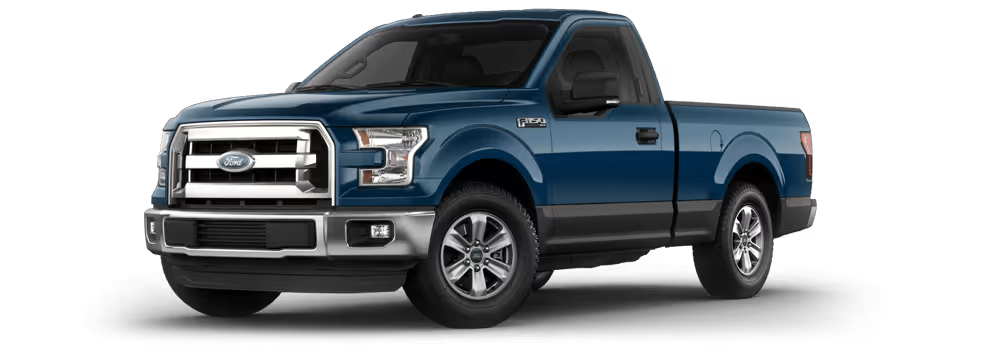
The 2015-2020 Ford F150 introduced an aluminum body, making it lighter and more fuel-efficient. Properly decoding the VIN is essential for verifying cab types, bed lengths, and engine options.
1st Character: Country of Origin
Indicates the manufacturing location:
1 – USA
2 – Canada
2nd Character: Manufacturer
Identifies the manufacturer:
F – Ford
3rd Character: Vehicle Type/Division
Defines the vehicle type:
T – Truck
4th-8th Characters: Vehicle Attributes
This section identifies cab type, bed length, drivetrain, and engine.
Cab Type Codes (4th Character)
The 2015-2020 F150 was available in three cab styles:
Regular Cab – Often coded as “1” or “2”
SuperCab (Extended Cab) – Typically coded as “4”
SuperCrew (Crew Cab) – Typically coded as “6”
Bed Length Codes
Ford modified bed length codes in this generation. Common VIN codes include:
5.5 ft (Short Bed) – Usually coded as “S”
6.5 ft (Standard Bed) – Usually coded as “X”
8 ft (Long Bed) – Usually coded as “L”
Engine Codes (8th Character)
Ford introduced updated EcoBoost engines and retained the 5.0L Coyote V8.
2015-2020 Ford F150 Engine Codes:
P – 2.7L EcoBoost V6 (Introduced in 2015, turbocharged engine)
G – 3.5L EcoBoost V6 (Twin-turbo engine, higher towing capacity)
D – 3.5L Ti-VCT V6 (Naturally aspirated, base engine in lower trims)
F – 5.0L Coyote V8 (Ford’s main naturally aspirated V8 option)
Engine Notes:
The 2.7L EcoBoost V6 became a fuel-efficient turbocharged option.
The 3.5L EcoBoost V6 continued as a high-performance twin-turbo engine.
The 3.5L Ti-VCT V6 was the entry-level engine in earlier trims.
The 5.0L Coyote V8 remained the most powerful naturally aspirated option.
9th Character: Check Digit
A verification code used to validate the VIN.
10th Character: Model Year
Indicates the production year:
Year | VIN Code |
|---|---|
2015 | F |
2016 | G |
2017 | H |
2018 | J |
2019 | K |
2020 | L |
11th Character: Assembly Plant
Identifies the manufacturing facility:
F – Dearborn, MI
K – Kansas City, MO
12th-17th Characters: Production Sequence Number
A unique identifier is assigned to each truck.
2021-Present Ford F150 VIN Decoder
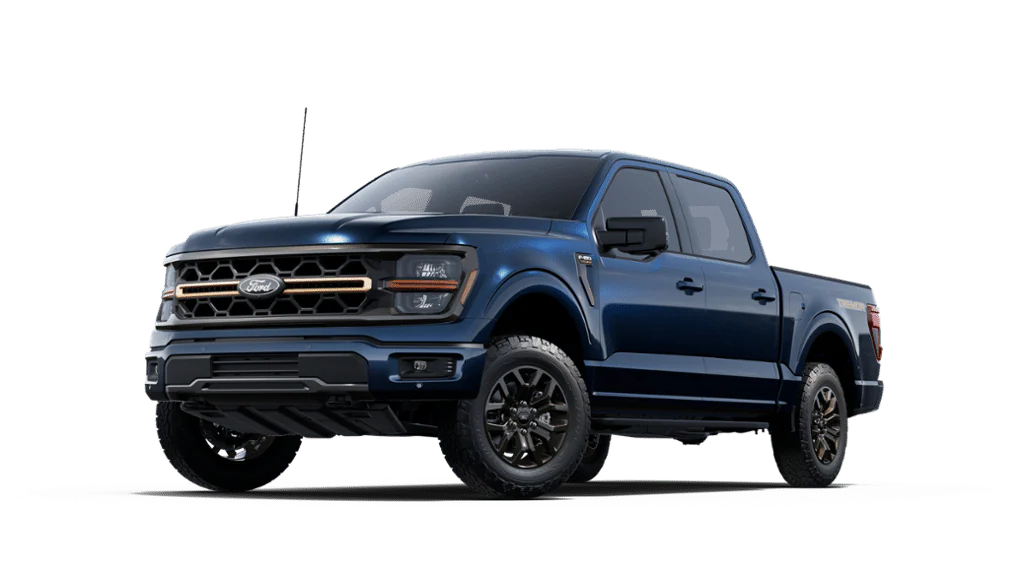
The 2021+ Ford F150 introduced new hybrid technology, updated engines, and advanced tech features. Proper VIN decoding is crucial for verifying cab configurations, bed lengths, and engine options.
1st Character: Country of Origin
Indicates the manufacturing location:
1 – USA
2 – Canada
2nd Character: Manufacturer
Identifies the manufacturer:
F – Ford
3rd Character: Vehicle Type/Division
Defines the vehicle type:
T – Truck
4th-8th Characters: Vehicle Attributes
This section identifies cab type, bed length, drivetrain, and engine.
Cab Type Codes (4th Character)
The 2021+ F150 continues with three cab styles:
Regular Cab – Often coded as “1” or “2”
SuperCab (Extended Cab) – Typically coded as “4”
SuperCrew (Crew Cab) – Typically coded as “6”
Bed Length Codes
Ford maintains its three standard bed sizes, but the VIN codes have been updated:
5.5 ft (Short Bed) – Usually coded as “S”
6.5 ft (Standard Bed) – Usually coded as “X”
8 ft (Long Bed) – Usually coded as “L”
Engine Codes (8th Character)
Ford introduced a new hybrid engine (PowerBoost) in 2021, while continuing EcoBoost and Coyote V8 options.
2021-Present Ford F150 Engine Codes:
P – 2.7L EcoBoost V6 (Turbocharged, efficient mid-range option)
G – 3.3L Ti-VCT V6 (Naturally aspirated base engine)
F – 3.5L EcoBoost V6 (Twin-turbo, high-torque engine for towing)
D – 3.5L PowerBoost Full Hybrid V6 (Hybrid, most fuel-efficient with high torque)
T – 5.0L Coyote V8 (Traditional V8 power, naturally aspirated)
Engine Notes:
The 3.5L PowerBoost Hybrid introduced electrification to the F150 lineup.
The 3.5L EcoBoost V6 remains a high-performance twin-turbo option.
The 2.7L EcoBoost V6 is a balanced choice between power and efficiency.
The 5.0L Coyote V8 continues as the most powerful naturally aspirated engine.
9th Character: Check Digit
A required verification code used to validate the VIN.
10th Character: Model Year
Indicates the production year:
Year | VIN Code |
|---|---|
2021 | M |
2022 | N |
2023 | P |
2024 | R |
2025 | S (Expected) |
11th Character: Assembly Plant
Identifies the manufacturing facility:
F – Dearborn, MI
K – Kansas City, MO
12th-17th Characters: Production Sequence Number
A unique identifier is assigned to each truck.
What Are Some F150 VIN Decoder Examples
Example 1: 2009 Ford F150 (12th Generation, 2009-2014)
VIN: 1FTFW1EV9AFA12345
- 1 – USA (Country of Origin)
- F – Ford (Manufacturer)
- T – Truck (Vehicle Type)
- F – F150 Series
- W – SuperCrew Cab
- 1 – 6.5 ft Bed
- E – 5.4L Triton V8 (Engine)
- V – Check Digit
- 9 – 2009 (Model Year)
- A – Dearborn, MI (Assembly Plant)
- FA12345 – Production Sequence
Example 2: 2014 Ford F150 (Final Year of 12th Gen)
VIN: 1FTFX1EF0EFC67890
- 1 – USA
- F – Ford
- T – Truck
- F – F150
- X – SuperCab
- 1 – 6.5 ft Bed
- E – 5.0L Coyote V8
- F – Check Digit
- E – 2014 Model Year
- F – Dearborn, MI
Example 3: 2016 Ford F150 (Aluminum Body, 13th Gen: 2015-2020)
VIN: 1FTFW1EG7GFA54321
- 1 – USA
- F – Ford
- T – Truck
- F – F150
- W – SuperCrew Cab
- 1 – 6.5 ft Bed
- E – 3.5L EcoBoost V6
- G – Check Digit
- G – 2016 Model Year
- F – Dearborn, MI
Example 4: 2019 Ford F150 Raptor
VIN: 1FTEX1RG2KFA98765
- 1 – USA
- F – Ford
- T – Truck
- E – F150 Raptor
- X – SuperCab
- 1 – 5.5 ft Bed
- R – High-Output 3.5L EcoBoost V6
- G – Check Digit
- K – 2019 Model Year
- F – Dearborn, MI
Example 5: 2021 Ford F150 (Hybrid PowerBoost, 14th Gen: 2021-Present)
VIN: 1FTFW1ED7MFA24680
- 1 – USA
- F – Ford
- T – Truck
- F – F150
- W – SuperCrew Cab
- 1 – 5.5 ft Bed
- E – 3.5L PowerBoost Hybrid V6
- D – Check Digit
- M – 2021 Model Year
- F – Dearborn, MI
Example 6: 2024 Ford F150 (Latest Model, 14th Gen)
VIN: 1FTFX1FP4RFA56789
- 1 – USA
- F – Ford
- T – Truck
- F – F150
- X – SuperCab
- 1 – 6.5 ft Bed
- F – 5.0L Coyote V8
- P – Check Digit
- R – 2024 Model Year
- F – Dearborn, MI
Where And How Do I Find An Online Ford F150 VIN Decoders?
Numerous online Ford F150 VIN decoder tools are readily available, offering a quick way to potentially decipher your truck’s VIN. The primary benefits of using these tools are convenience and speed. Within seconds, you can often get a report listing various details about your F150. However, it’s crucial to approach these online Ford F150 VIN decoders with caution. While these tools can provide a helpful starting point, it’s important to understand their potential limitations.
Regardless of which online Ford F150 VIN decoder you choose, it is essential to independently verify any information you obtain with other reputable sources, such as official Ford documentation, a qualified mechanic, or a trusted automotive professional. Online decoders are tools to assist you. Never rely on them as the sole source of truth.
Best Ford VIN Information
While a Ford F150 VIN decoder is a valuable tool, it should not be the only source of information you consult. Several other methods can help you cross-check and verify your truck’s specifications. This may involve using sources beyond the VIN.
Ford Etis Website (or equivalent): If available in your region, the Ford Etis (Engineering Technical Information System) website, or a similar official Ford resource, might allow you to access detailed build information for your F150 using the VIN. This might be in the form of a window sticker or build sheet. Click here.
Window Sticker/Build Sheet: The original window sticker (Monroney label) or a copy of the build sheet provides the most accurate and comprehensive information about your F150’s original factory configuration. If you have access to these documents, they are invaluable.
Visual Inspection: A careful visual inspection of your F150 can confirm certain features, such as the engine type, cab configuration, bed length, and installed options. Compare what you see with the information you obtained from the Ford F150 VIN decoder and other sources. It is important to check these.
Professional Pre-Purchase Inspection: Before purchasing a used F150, a professional pre-purchase inspection by a qualified mechanic is highly recommended. A mechanic can identify potential mechanical issues and verify the truck’s specifications, providing valuable peace of mind and checking for discrepancies.
Why Decode Your Ford F150 VIN?
There are numerous compelling reasons why decoding your Ford F150 VIN is crucial for both owners and prospective buyers. These range from avoiding fraud to performing the right service and maintenance.
Buying a Used F150: When purchasing a used F150, decoding the VIN helps protect you from fraud by verifying that the vehicle’s specifications match its description. You can confirm the engine type, cab configuration, bed length, and other features, ensuring you’re getting what you expect. This helps to make certain you are purchasing the exact truck you intend to.
Ordering Parts: Using the VIN to identify the precise specifications of your F150 is essential for ordering the correct replacement parts for maintenance and repairs. This minimizes the risk of ordering incompatible parts, saving you time and money.
Maintenance and Repairs: Knowing the engine type, drivetrain, and other key features of your F150, as revealed by the VIN, helps with finding the right maintenance procedures and repair information.
Checking for Recalls: You can use your F150’s VIN to check for any outstanding safety recalls issued by Ford. Addressing recalls promptly is essential for your safety and the proper functioning of your truck.
Modifications and Upgrades: Understanding the original configuration of your F150, as identified through the VIN, helps with planning appropriate modifications and upgrades. You can ensure that any aftermarket parts or modifications are compatible with your truck’s specific specifications.
Why You Should Decode Your Ford F150 VIN
Decoding your Ford F150 VIN is a vital step for any owner or prospective buyer. Whether you’re buying used, ordering parts, performing maintenance, or simply seeking to understand your truck better, the VIN provides valuable insights into its history, specifications, and features.
By using the information provided in this guide, along with other verification methods, you can make more informed decisions about your F150, ensuring its longevity, safety, and performance.
Remember to always verify any information you obtain from a Ford F150 VIN decoder with official Ford documentation, a qualified mechanic, or other reputable sources. When in doubt, seek professional advice to ensure you’re making the right choices for your F150 and your peace of mind.
Best Ford VIN Decoders
- carVertical is a popular VIN decoder that focuses on providing a comprehensive vehicle history report. They often emphasize uncovering hidden damage, mileage rollbacks, theft records, and maintenance history. Some users have found their reports quite detailed.
Ford VIN Decoder (Official Ford Tool)
This is the official VIN decoder from Ford, offering the most accurate factory specifications. It provides details on the year, make, model, trim level, engine, transmission, drivetrain, factory-installed options, and sometimes the original dealer where the vehicle was sold. While it does not include accident history or ownership records, it is the gold standard for verifying original equipment and build data. The Ford VIN decoder is available through Ford’s official website or the FordPass app, though navigation to the VIN lookup tool may require some digging.
EpicVin
EpicVin is a widely used VIN decoder that provides detailed vehicle history reports. It includes information on accidents, title issues, odometer readings, salvage records, and auction history. EpicVin pulls data from multiple sources, making it useful for getting a more complete view of a used Ford vehicle’s past.
AutoCheck (by Experian)
AutoCheck is a paid service that provides a risk assessment score and detailed vehicle history reports. It is a competitor to Carfax and is often bundled with other Experian services. AutoCheck reports may include title records, accident reports, mileage verification, and market comparisons. It is a good tool for evaluating a used Ford vehicle before purchase.
VINCheck.info
VINCheck.info is a free VIN decoder tool that allows users to look up basic vehicle details. While it does not offer the depth of paid services, it provides limited information on specifications, recalls, and some title data. It can be a quick and easy first step before purchasing a Ford VIN history report from a paid service.

Article By: Dale Ogden
Dale is a highly respected automotive industry expert, renowned for his pioneering work in vehicle forecasting and asset management. As the founder of Check Your Spec and former Forecast Manager at CAP HPI (the UK equivalent of Kelley Blue Book), he spearheaded the development of forecasting strategies and depreciation models for internal combustion, hybrid, and electric commercial vehicles. With over two decades of experience, Dale pioneered EV forecasting models now used by major manufacturers, and has generated residual values for over 10,000 new vehicles.
Ford F150 VIN Decoder FAQ
The engine code on my Ford F150 VIN decoder is different than what I see on my engine. Is this a problem?
Yes, the engine code is crucial. An engine that does not match the VIN could indicate an engine swap, which can affect your vehicle’s performance and value. It’s best to investigate further with a mechanic.
What if my Ford F150 was manufactured in Canada or Mexico? Will the VIN structure be the same?
While the basic VIN structure is standardized, there may be some variations in the coding depending on the manufacturing location. It’s best to consult resources specific to the country of origin. The VIN code should still be unique and tell you the country of origin.
Where can I find a table of model year codes for my Ford F150?
We have this covered, it’s in the section above called “Decoding Your F150 VIN: A Year By Year Breakdown”.
Can I use a Ford F150 VIN decoder to find out if my truck has been in an accident?
A VIN decoder alone cannot tell you if your truck has been in an accident. You would need to run a vehicle history report (e.g., Carfax, AutoCheck) for that information. Even with the VIN, you should inspect a truck carefully and consider using a mechanic.
My Ford F150 is a special edition (e.g., Raptor, King Ranch, Platinum). Will the VIN provide information about that?
The VIN might not directly encode the specific special edition. However, knowing the engine, cab, and other features from the VIN can help you narrow down the possibilities and confirm the special edition through other sources.
Unlock accurate valuations for your car’s features in seconds – find out what your options are worth today and in the future.

